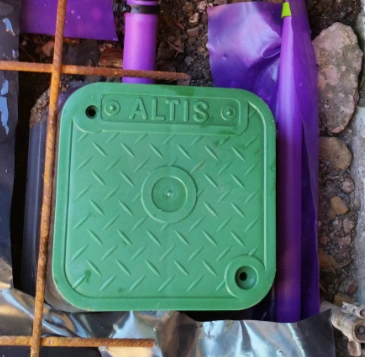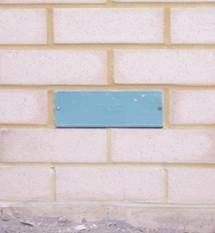Termite reticulation systems – what are they and how do they work?
What are termite reticulation systems? How do termite reticulation systems protect your home? And how often do you have to “top up” a termite reticulations system?
The first time many homeowners encounter a termite reticulation system is when then buy a new house and spot a strange box on the ground with a connection point to what looks like an underground hose. It’s probably not a watering system, it is more likely to be a termite reticulation system.
What is a termite reticulation system?
A termite reticulation system consists of a network of pipes which are placed underneath a concrete slab house and surrounding concreted/paved areas prior to construction. The pipes are used to deliver insecticides to the soil underneath the building, without having to drill through or cut the concrete after construction. The reticulation system is pumped up every few years with insecticide, which ‘leaks’ into the surround soil through a series of small holes in the pipe to deliver the required dose.

There are a number of reticulation system brands, two of the common brands are Altis and Termguard. Both of these systems are installed in the ground. There is also a system called Cavtech, where the pipes are laid inside the walls, to treat the base of the wall cavity to prevent termite entry.



How do termite reticulation systems work?
If these systems have been installed correctly, haven’t been compromised (through digging and gardening) and have been recharged at the required intervals, they combine with the building construction to protect the building from concealed termite attack.
The termiticide spreads into the soil around the pipes, creating a treated zone which the termites cannot pass. If installed correctly, it combines with the physical elements of the construction to prevent conceal entry of termites into the building.
As with any termite protection system, it is still always necessary to have annual termite inspections, not only to check the system but inspect the whole building and property, to make sure termites haven’t found a way around the system.
How do you know if the reticulation system is still in good order?
Unfortunately, there is no way of knowing whether the system was installed correctly (one reason why annual termite inspections are still a must), but there are a few signs that may indicate an issue with the system. As a homeowner you should be aware if a reticulation system is in place to avoid damaging pipes and certainly if you spot some pipework sticking up above the surface, it indicates an obvious issue, and you should give Rebel Pest Professionals a call. If any strange wet patches are spotted around the building, especially on the inside walls with the Cavtech system, it could indicate an issue.
However, when Rebel Pest Professionals carry out a system recharge, we always do a system check before starting:
- Carry out a complete termite inspection
- Check the metre box for a durable notice (information on the previous treatment)
- Check any certificate of treatment the homeowner may have
- Check all re-charge points for cracks / damage
- Inspect the system for exposed areas and potential leaks
When we re-charge a system, unusual pressure levels and/or quantities of insecticide used will indicate potential issues with the system.
How often does a reticulation system need to be recharged?
The duration between re-charges depends on the insecticide used and the concentration. At Rebel Pest Professionals we use Biflex (up to 3 years) and Termite HE (up to 10 years). Annual termite inspections are still required to maintain any warranty.
Do Rebel Pest Professionals recharge and install termite reticulation systems?
Rebel Pest Professional recharge all the common reticulations systems. Please give us a call for a quote. If you’re not sure what system you have, we’ll ask a few questions to find out.
If you’re building a new house or renovating, or laying paths or driveways around the perimeter of your home, speak to us about termite protection before you start. Recent updates to termite regulations means that if you want to use a chemical treatment to protect a new home, it needs to be possible to re-apply the chemical periodically to ensure the building remains protected. If the areas are under a permanent ground covering such as a concrete slab, a termite reticulation system must be installed.
However, depending on the nature of the construction we may suggest alternatives to installing a reticulation system, so please speak to us in the planning phases so we can discuss all your options.
